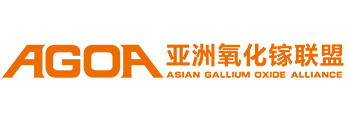

【Epitaxy Papers】Crack-free thick α-Ga₂O₃ films grown on Ni–Pd-CNT nanoalloy masks
日期:2025-11-05阅读:127
Researchers from the Chonnam National University have published a dissertation titled "Crack-free thick α-Ga2O3 films grown on Ni–Pd-CNT nanoalloy masks" in Materials Science in Semiconductor Processing.
Abstract
We report a Ni–Pd–CNT-based nanoalloy mask that improves the crystalline quality of α-Ga2O3 epilayers grown via halide vapor phase epitaxy (HVPE). Conventional heteroepitaxy of α-Ga2O3 on sapphire substrates typically results in high dislocation densities due to lattice and thermal expansion mismatches. To address this problem, a Ni–Pd–CNT nanoalloy layer was deposited on a (0001)-oriented α-Ga2O3 buffer layer using electroless plating and spray coating, and α-Ga2O3 was regrown for 15 min. Among the plating durations tested (20, 40, and 60 s), the 40 s condition yielded the thickest epilayer (∼11 μm), the lowest etch pit density (∼4.8 × 107 cm−2), and the narrowest X-ray diffraction rocking curve for the asymmetric (10–14) reflection.
AFM and SEM analyses confirmed improved surface uniformity and reduced tilting of seed crystals under these conditions. All samples exhibited high optical transmittance (>80 %) in the visible region and a direct bandgap of ∼5.13 eV, which indicates that the optical properties remained stable regardless of the Ni content. These results show that the Ni–Pd–CNT-assisted nano-epitaxial lateral overgrowth (nano-ELOG) approach effectively reduces threading dislocation density while preserving wide bandgap transparency. This method offers a low-cost, scalable route for producing high-quality α-Ga2O3, with strong potential for next-generation power electronics and UV optoelectronic devices.
DOI:
https://doi.org/10.1016/j.mssp.2025.110144


